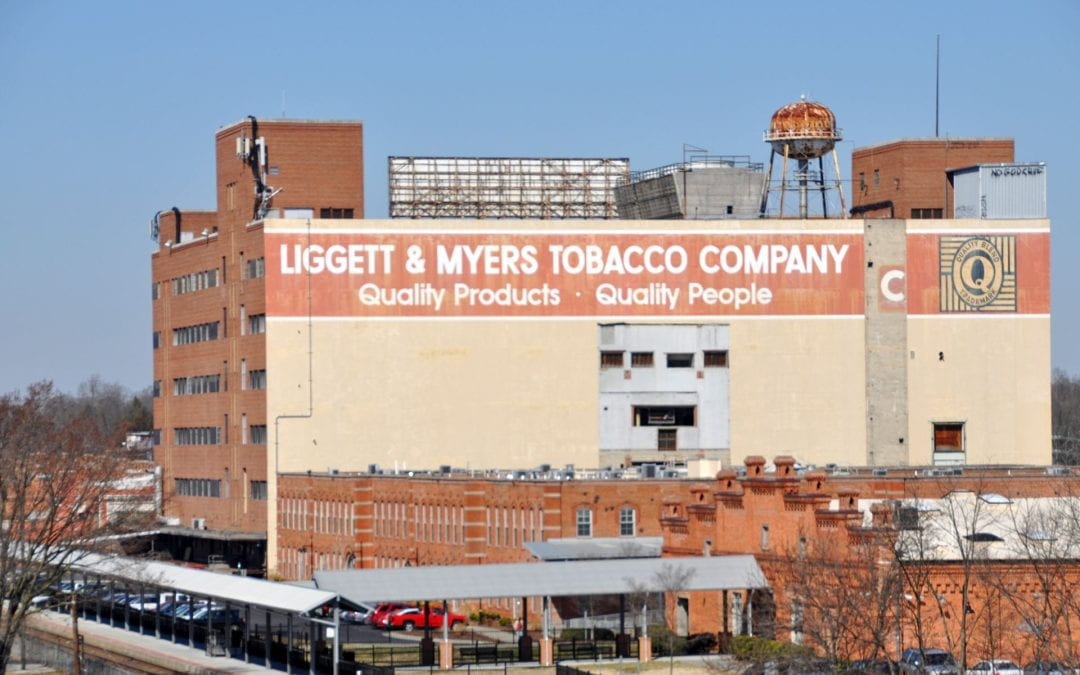In the early 1900s, North Carolina was known for its unbleached cloth, plaids, ginghams, denims, towels, socks, and flannel, clothing for working people, and tobacco. During World War I, American-made textile goods, specifically blankets and military uniforms, were in high demand. This sparked the North Carolina textile industry and triggered the expansion of textile mills in the state.
Between 1975 and 1985, about 800 mills closed in the United States and the employment rate in North Carolina dropped significantly. The decline was due to decreased demand for U.S.-made goods because multiple free trade agreements with other countries encouraged textile and apparel imports. These mills remained abandoned until recent years when the people of North Carolina decided to give these mills a new purpose.
The State of North Carolina has created financial incentives for owners and developers who choose to renovate historic buildings through adaptive reuse, which allows an existing structure to be redesigned and repurposed instead of demolished so a new structure can be built from scratch. The practice reduces greenhouse gas emissions and the potentially hazardous solid waste that can come from standard construction approaches. Adaptive reuse in cities also promotes land conservation by limiting the number of undeveloped parcels that are developed for human use. When there are already water lines, sewer pipes, roads, and other necessary infrastructure available for a planned project, less construction is necessary.
The North Carolina Department of Natural and Cultural Resources, in conjunction with the National Park Service, administers tax credits to owners and developers of existing buildings and infrastructure. Owners and developers can receive up to a 25 percent state income tax credit for redeveloping historic structures and converting the into income-producing businesses. The volume of the tax credit is determined by North Carolina General Statutes § 105-129.105-110. Additionally, owners and developers can receive a state income tax credit for transforming a non-income-producing structure, like owner-occupied structures.
In addition to state tax credits, developers can utilize a grant from Preservation Durham, an organization whose goal is to preserve historic structures in Durham. Preservation Durham also offers educational and technical assistance to people who own or plan to purchase a historic property. Durham’s downtown lost its appeal in the late 1900s and early 2000s due to urban sprawl and failed urban renewal, but the adaptive reuse of historic buildings across downtown has brought attention back to the city and boosted the local economy. Renovating existing structures to suit a community’s current needs can be more cost-efficient and liven up a previously lackluster street filled with vacant buildings.

Credit: Creative Commons (James Willamor, Flickr)
The Bull Durham Tobacco Building, called “The Old Bull” by locals, is the oldest factory building in the city. Built in 1874, the building produced the first nationally marketed brand of tobacco products in the United States and once was the world’s largest tobacco factory. In 1987, as demand for tobacco products declined, the tobacco company shut down and the building was left abandoned until 2004, when renovations on this historic building began. Now, the Old Bull is a mixed-use space, full of offices, apartments, and condominiums.
West Village, located in Durham’s Historic District, is a mixed-use, pedestrian-oriented development which comprises six historic tobacco manufacturing structures that were built between 1899 and 1926. Through adaptive reuse, they were converted into 375 apartments, office and lab spaces, retail spaces, and an Amtrak Station. These renovated structures span nine acres near multiple forms of public transportation, encouraging the use of Durham’s bus and train systems. Chesterfield Building, a part of the West Village, is the state’s third largest historic tax credit project.
The Golden Belt is a restored textile mill, originally constructed in 1901, which produced cloth bags for smoking tobacco and cigarette cartons until 1996. Now, the structure contains modern offices, lab space, art studios, dining options, a stage for live music and Hi-Wire Brewing.
These adaptive reuse projects further the Downtown Durham Historic District Preservation Plan. The plan’s purpose is to establish a formal policy on the preservation of the architectural heritage of Durham and create guidelines for potential owners and builders of historic structures who want to repurpose the space. Additionally, it signals which zoning districts are appropriate for adaptive reuse projects. Durham’s Planning Department implemented a form-based code in the downtown area to allow mixed-use developments and to address the needs of the downtown area better than traditional Euclidean zoning (which only allows one type of use per zone rather than mixing, for example, residential and commercial purposes within a single zone). Form-based codes permit multiple uses of buildings, making the case studies described above possible.
For adaptive reuse projects like these to be feasible, they must be allowed by local land use law. Ideally, this involves amending a city’s comprehensive plan to encourage adaptive reuse and then adopting zoning amendments that permit multiple new uses for older buildings. Site plan regulations should be similarly flexible, and administrative agencies should permit waivers of standards, thereby expediting the review and approval process. The planning and land use regulatory documents in the city of Durham exhibit all of these characteristics.
In conclusion, adaptive reuse projects are only as great as the enabling conditions of the city in which they are located. Without the enabling conditions from Durham’s form-based code and the state tax credits, these projects would not have been possible.


I love this. I catered an event in “The Old Bull”, and it was a beautiful building. I hope this becomes a trend, and an incentive in more and more cities across the nation.